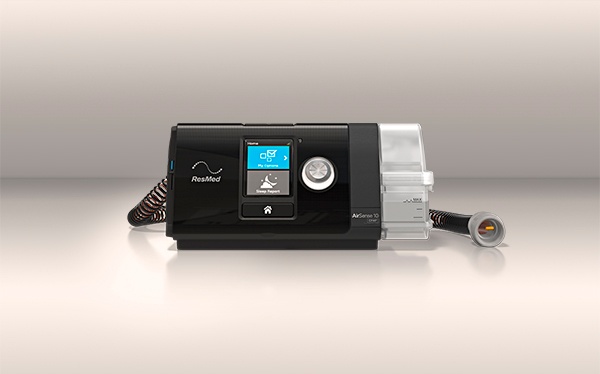
CPAP stands for Continuous Positive Airway Pressure. CPAP therapy is considered the "gold standard" for treating obstructive sleep apnea (OSA) and has been available for 30 years. It refers to the pressurized air that is delivered through a special delivery system which utilizes a mask.
There are three main components to a CPAP machine:
The CPAP machine is basically a small box which has a motorized fan inside. This fan very quietly draws air from the room, gently pressurizes it, then delivers it at a setting specific to your needs.
The air intake section of th e CPAP machine has a filter on it to eliminate the intake of dust, smoke, or other impurities in the air. This filter can be replaced as necessary.
e CPAP machine has a filter on it to eliminate the intake of dust, smoke, or other impurities in the air. This filter can be replaced as necessary.
Another key part of the CPAP machine is the humidification chamber built into the box. This is where water is warmed to humidify the pressurized air before it is delivered. Warm, moist air soothes your nasal and upper airway passages and helps prevent swelling and discomfort that can sometimes occur while using the therapy. Although using humidification is optional, it brings relief for the majority of patients using CPAP therapy who live in dry or arid climates or who wake up with a dry mouth, nasal passages, or throat. The humidification chamber is pretty easy to keep clean and should last the lifetime of the machine itself.
Hose. Attached to the CPAP machine is a hose which connects the box to the mask. This flexible, lightweight tubing is also typically heated to reduce any condensation that might collect inside it while the humidifier is in use. The hose is long enough—around 6 feet—to give you full movement during sleep. Hoses can wear out over time and should be replaced as necessary.
CPAP care. CPAP masks and the filters for the machines need to be cleaned and replaced regularly. Make sure to talk with your DME provider about best equipment care practices and replacement schedules.
Once CPAP therapy begins patients will begin to see the positive benefits in just a few weeks. For CPAP therapy to deliver best results, patients need to use their CPAP device regularly. Some of the signs that CPAP therapy is working are:
 Elimination of snoring and nightly obstructive apnea events.
Elimination of snoring and nightly obstructive apnea events.
Improved quality of sleep.
Increased ability to focus/concentrate during the day.
Considerable reduction of daytime drowsiness.
Lower overall blood pressure (both at night and during the day).
Prevention or reversal of serious medical conditions such as heart diseases and stroke.
We realize that you might have other questions about CPAP so we have provided some of the questions below with some articles that we've written to address them:
1506 Taylor Plaza East
Garden City, KS 67846
Phone: 620-271-9400
Toll-Free: 866-758-9400
Fax: 620-271-9201
1508 Taylor Plaza East
Garden City, KS 67846
Phone: 620-276-8100
Fax: 620-276-8106